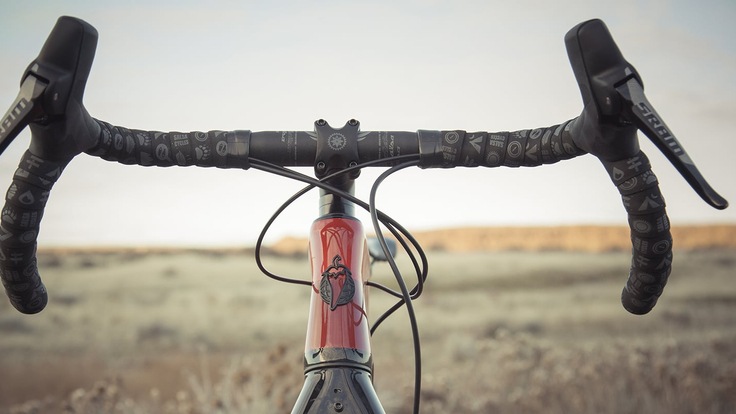Handlebar Theory
Comfort
The further you bend over your handlebar, the more weight and pressure you put on your hands. On road bikes this pressure is fairly constant because you're bent over the bar almost constantly. However, road bikes have a dropped handlebar that allows your hands a variety of positions, which helps relieve pressure.
Mountain bikes come with a so-called flat or riser bar that allows your hands only one position. However, because you're seated in a more upright position and not putting as much constant pressure on your hands, this one position is generally not a problem. Bar ends can be added to give your hands more variety.
If you do find your wrists or hands going numb on a long mountain bike ride, check your position on your bike.
- Make sure you're not too spread out in the cockpit. Your arms should be at shoulder width.
- Make sure you're not leaning too far over the handlebar. If you are, you may have to get a shorter stem, move your saddle forward, purchase a riser bar, or do a combination of the three.
Leverage
Archimedes once said that with a large enough lever, you could move the world. Your handlebars are your leverage when steering. The wider the handlebars, the more leverage you have—or so it seems. A lever only performs when the person pulling or pushing the lever has a stable base from which to work. As you make your handlebars wider, you spread your arms out and in so doing, actually lose leverage.
Ideally, your hands should be at shoulder width as you lean over your handlebars. You can go slightly narrower or slightly wider, but certainly no more than two, possibly three inches either way.
Lift
On a road bike, you don't have much call for lift—the ability to raise your front wheel over obstacles. On a mountain bike, lift is one of the cornerstones of excellent handling.
- Road Bike—Your center on a road bike is low and somewhat forward. This means you don't have much leverage when you need to pull back on the handlebar—important when climbing hills. Most pros will keep their hands on the top of the handlebar.
- Mountain Bike—Your center on a mountain bike is placed further back. This allows you to lift the front of your bike over obstacles. On downhill bikes and now increasingly on cross-country bikes, riders use a riser bar. This places the weight even further back, allowing the rider to get back out over their rear tire—important on steep descents.
Handlebar Mechanics
Most road bikes use drop bars, while most mountain bikes use flat bars. But in between there are wide deviations. Commuters, for example, tend to like riser bars. Cyclocrossers use drop bars. Triathletes use the odd-looking—but very effective—aerobar. What you choose depends on the type of bike you ride and how you ride it.
Once you've determined what kind of bar you want, consider the following three factors when selecting a bar.
Width
Choose a handlebar that most closely matches the width of your shoulders. On drop and carbon fiber flat bars, you're stuck with the width you choose. On aluminum or chromoly flat bars you can cut the ends down for a narrower grip.
Strength
Most bars are now made of aluminum or carbon fiber. They come with flares, tapers and butting to increase strength and save weight. See "Other Considerations" below.
Weight
Carbon fiber is lighter than aluminum and costs more. Both materials are excellent for a handlebar. The key question you need to answer: Does the weight saving justify the cost?
Other Considerations
Flared
This simply means that the bar has a wider diameter towards its middle than at its ends. The width of the handlebar wall does not change on flared bars. Basically it's a way of adding strength by adding material—a larger tube is stronger. It also adds some weight.
Tapered
To save weight, manufacturers will make the handlebar wall thinner as the bar moves away from the stem area to the grips. This puts strength where it is needed most.
Butted
Particularly on riser bars, which are used primarily on downhill bikes, the bars are butted to provided even more strength while shaving weight. The butting usually occurs at the middle of the bar, where the stem holds it and at the second riser bends.
Bar Ends
To add more hand positions to a flat or riser bar, riders will add bar ends. These devices are also good for added leverage on climbs with poor traction. They allow you to get your weight back and your center of gravity lower much like the drops in a drop bar.
